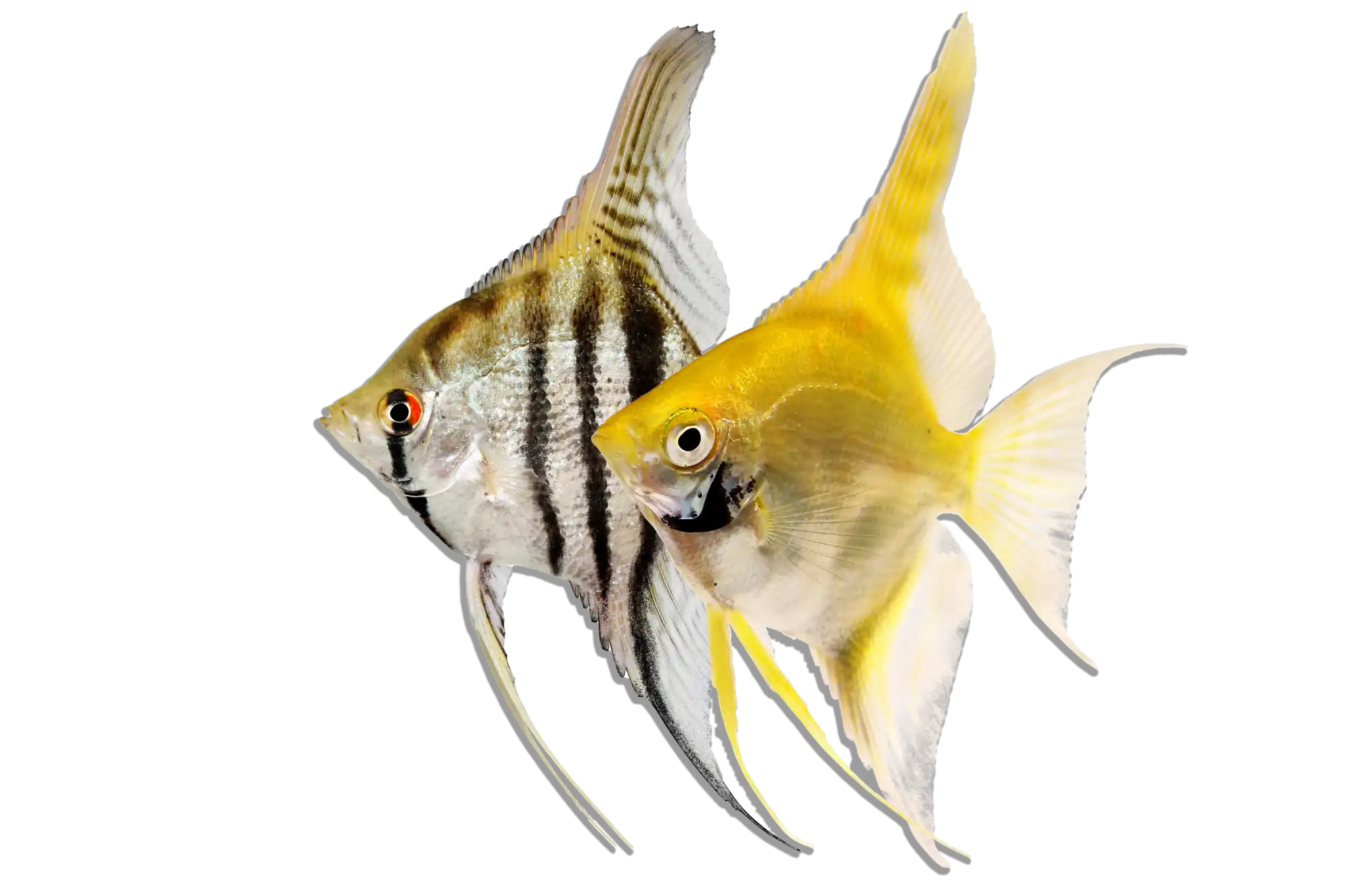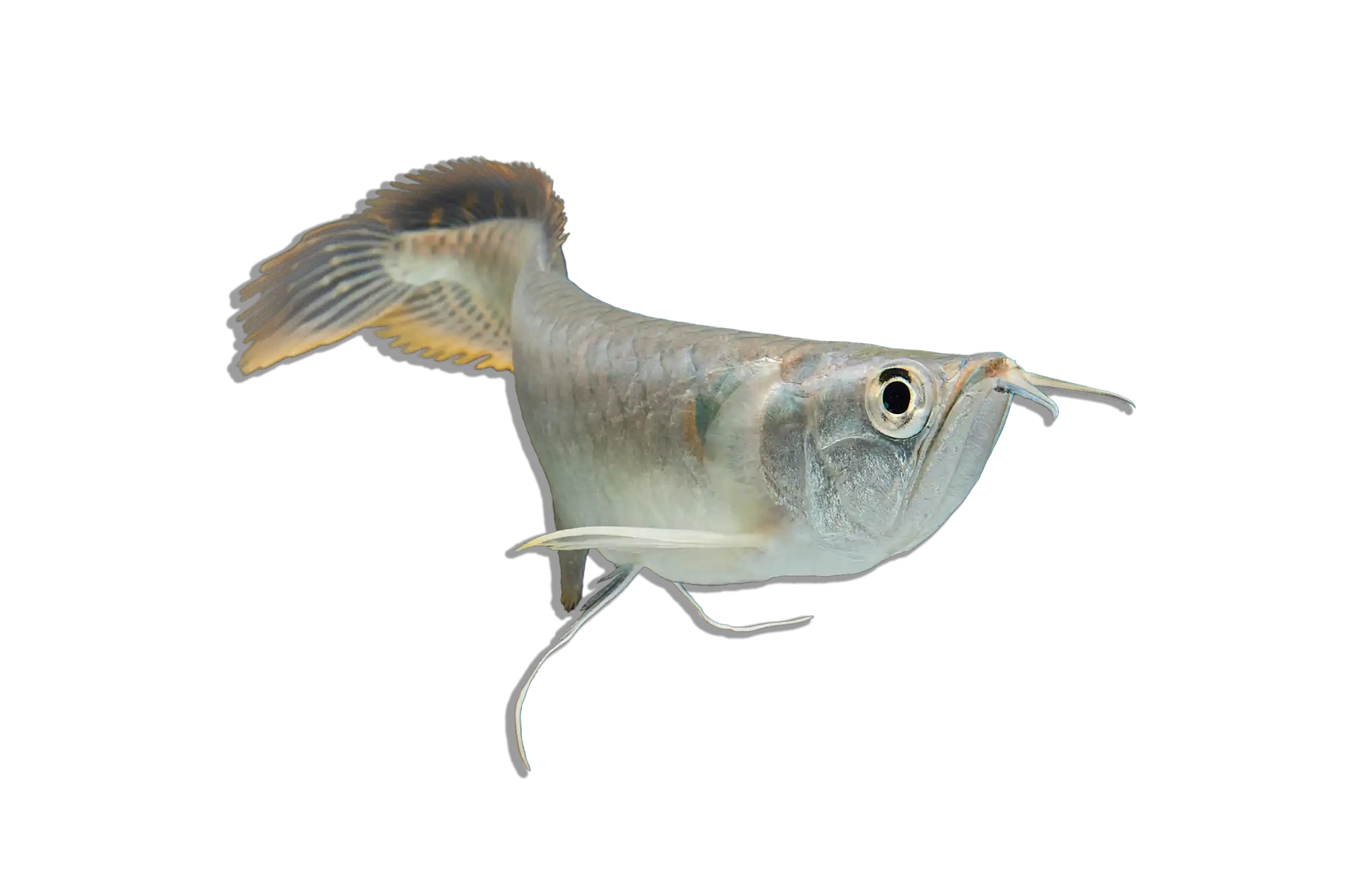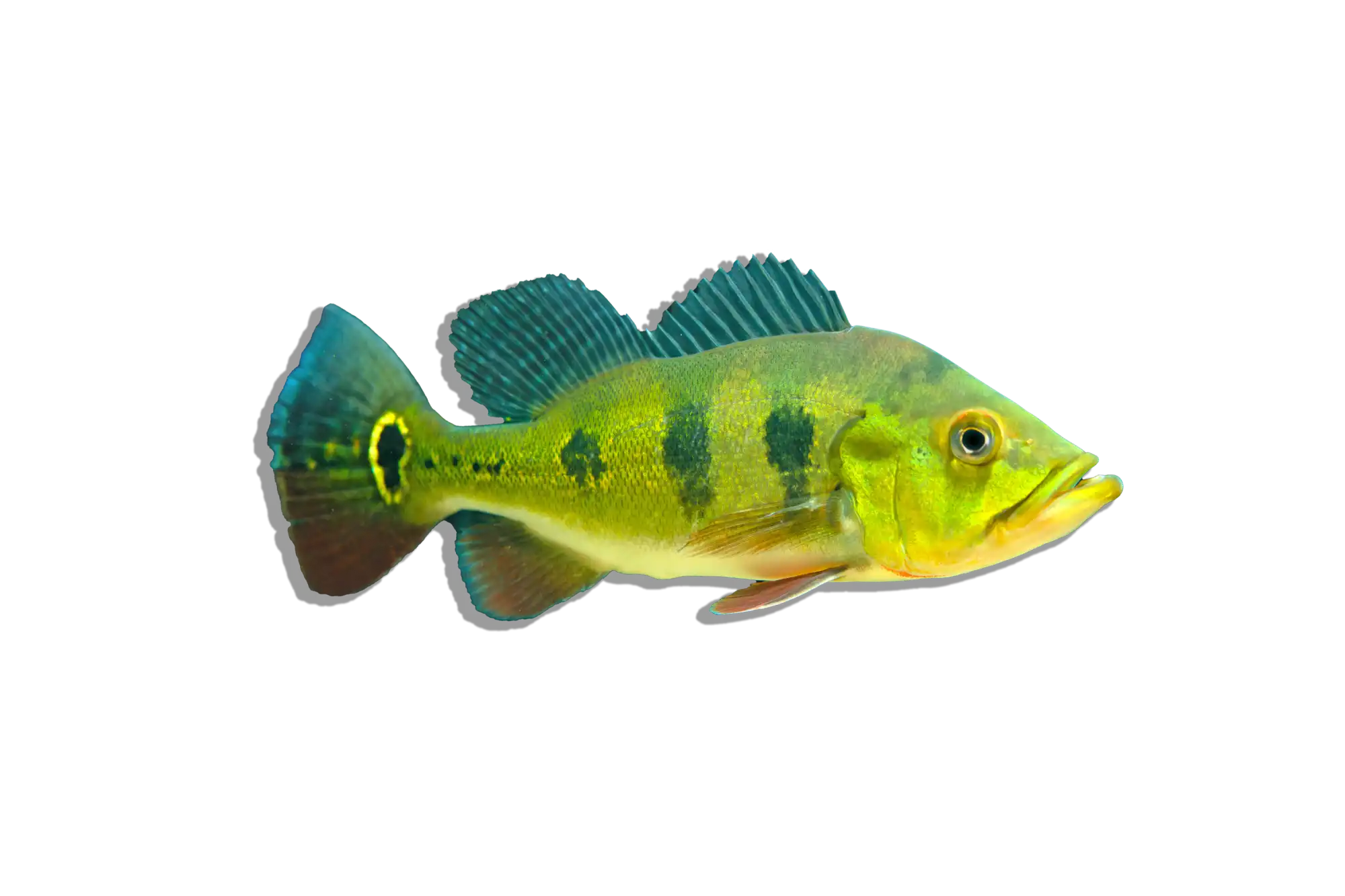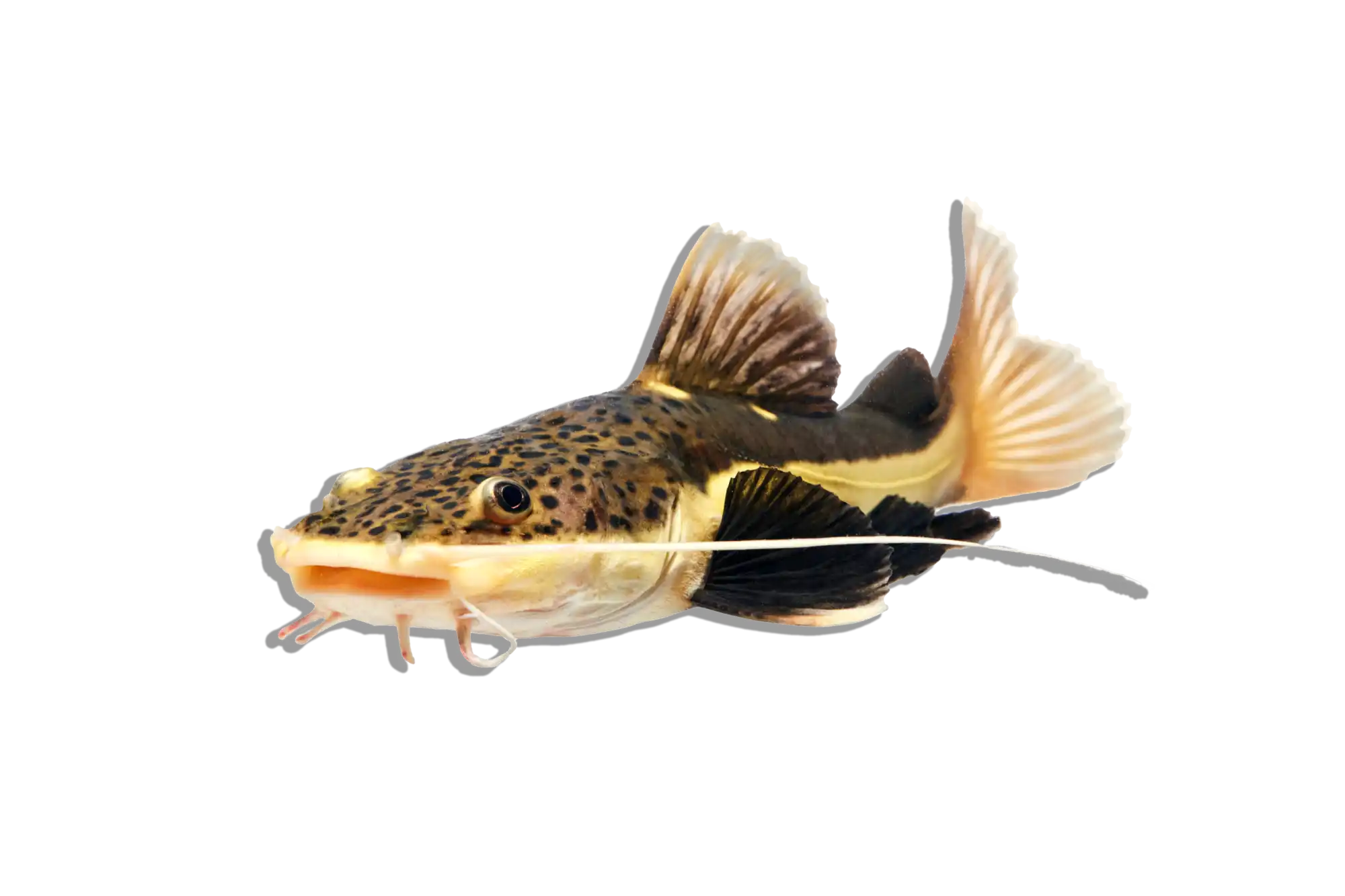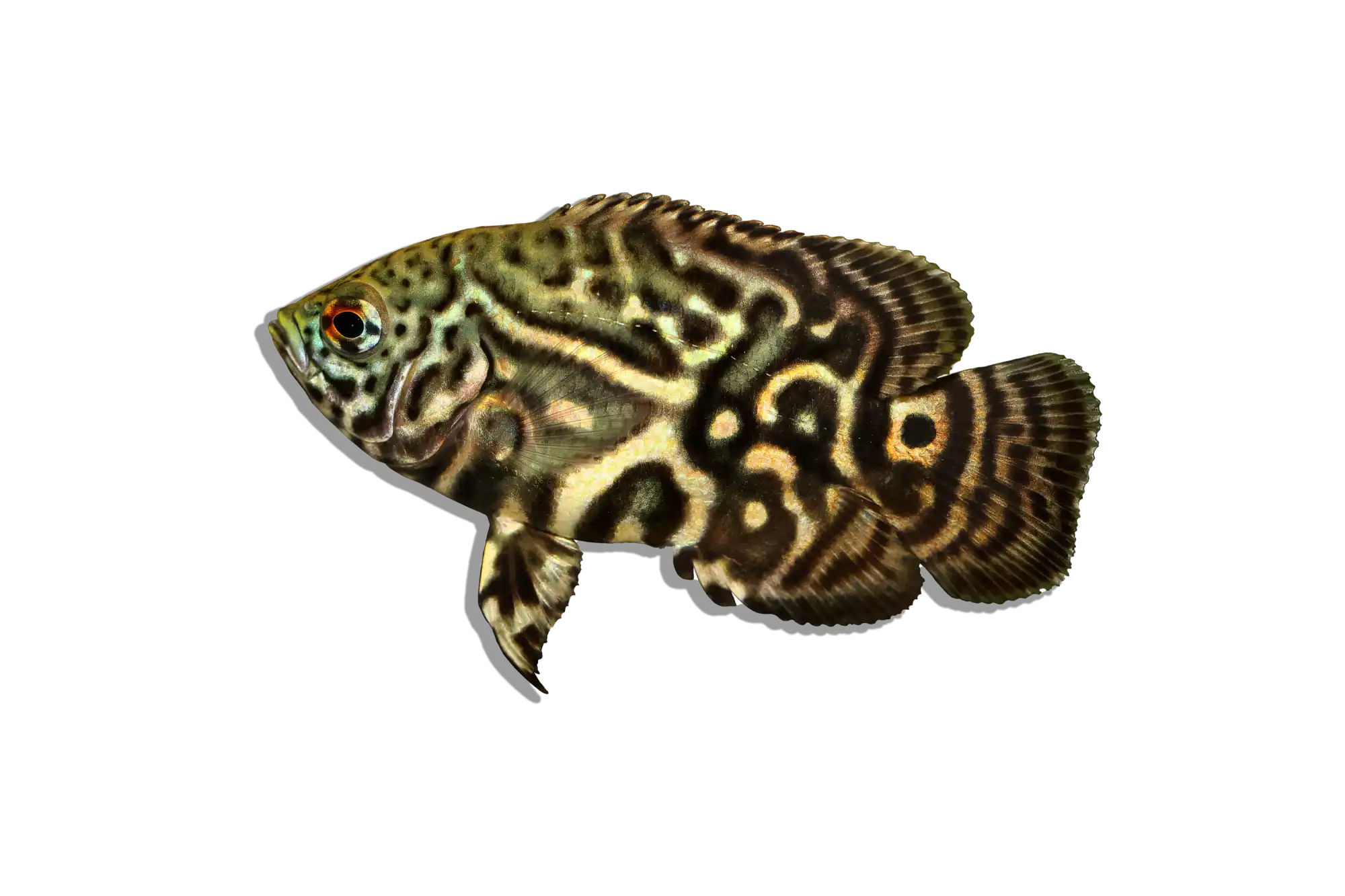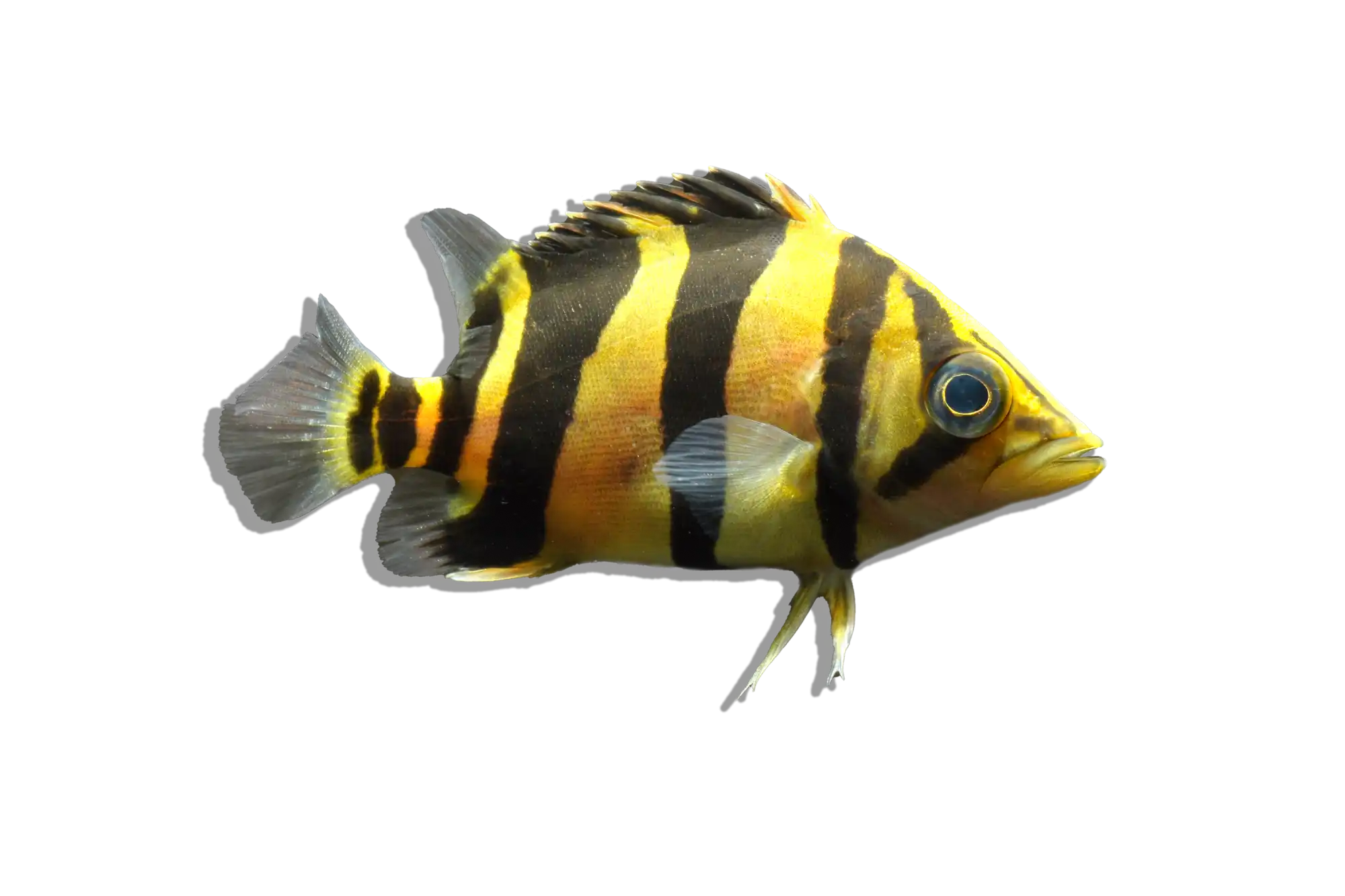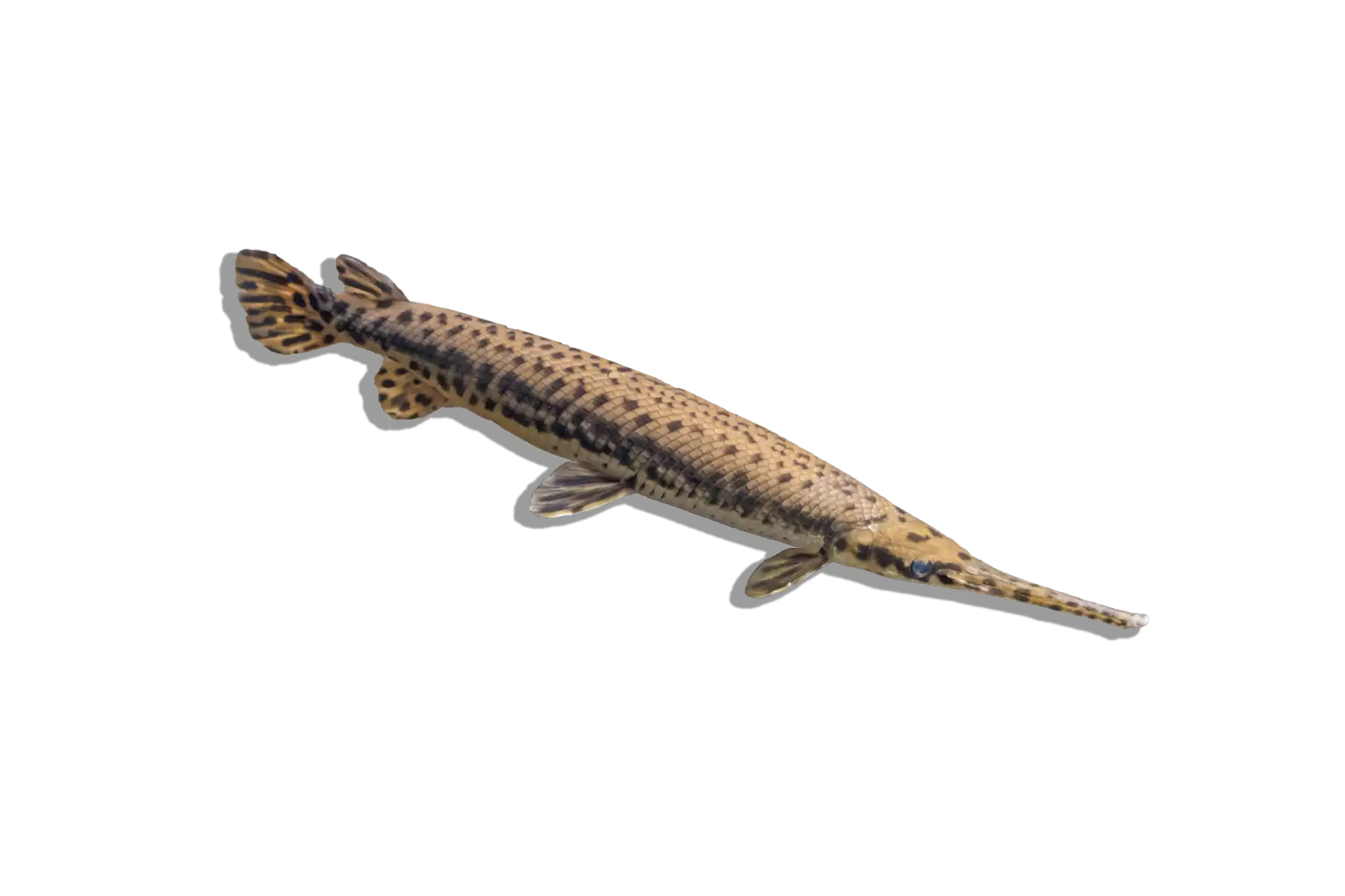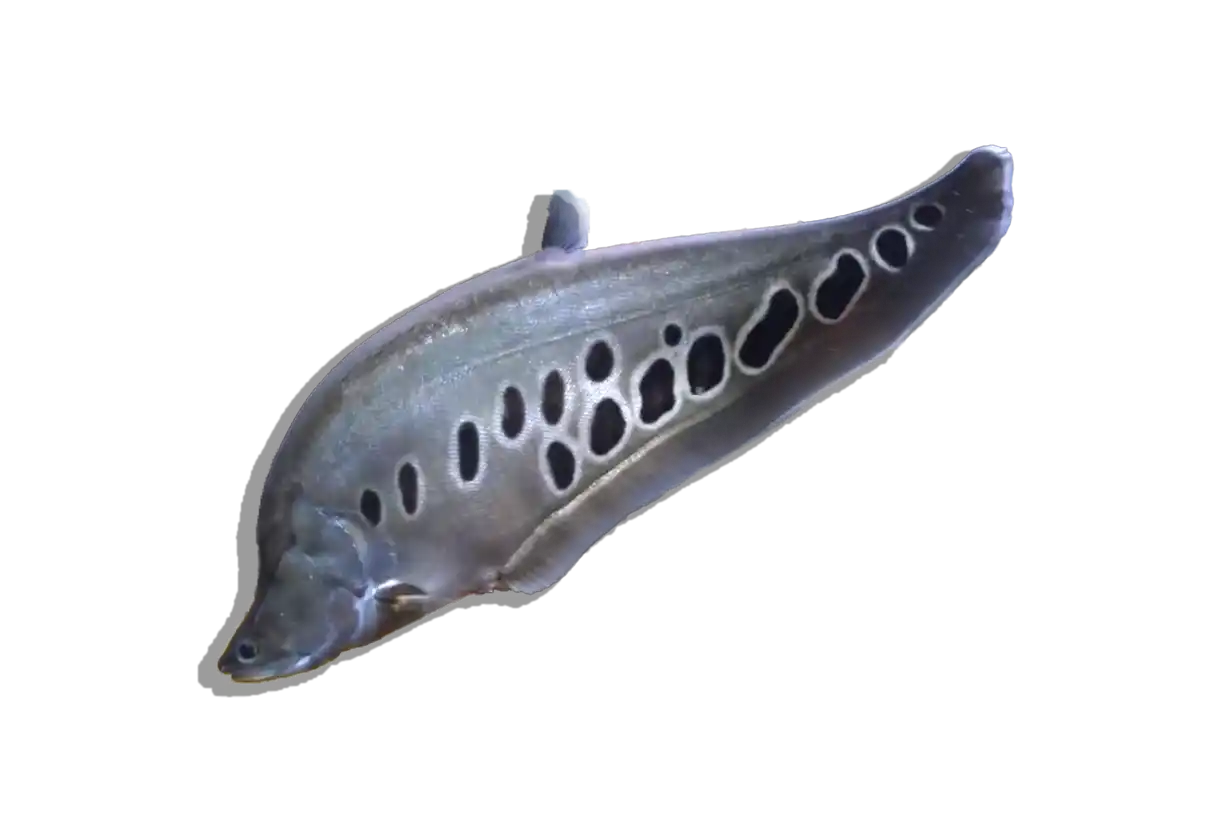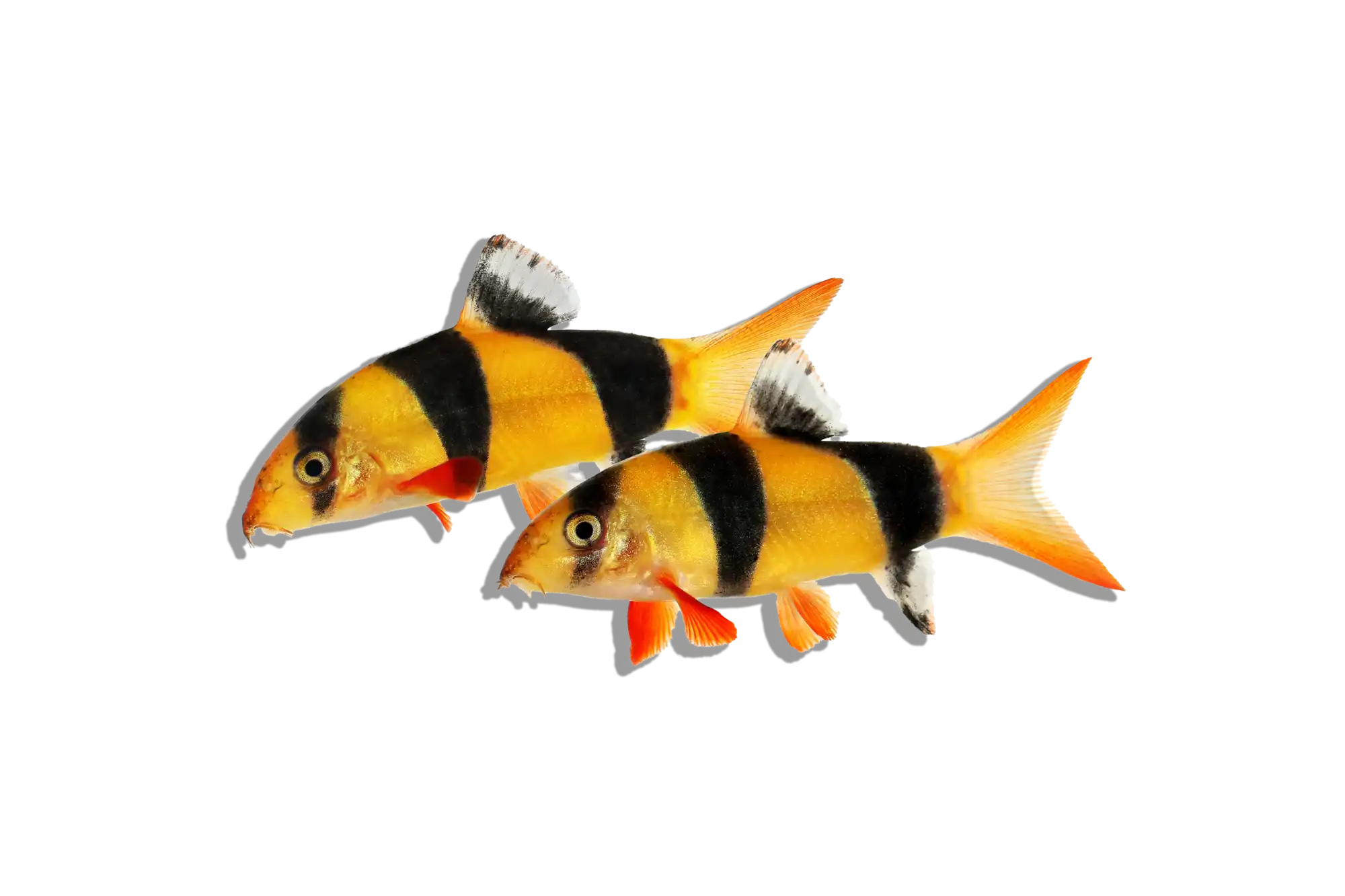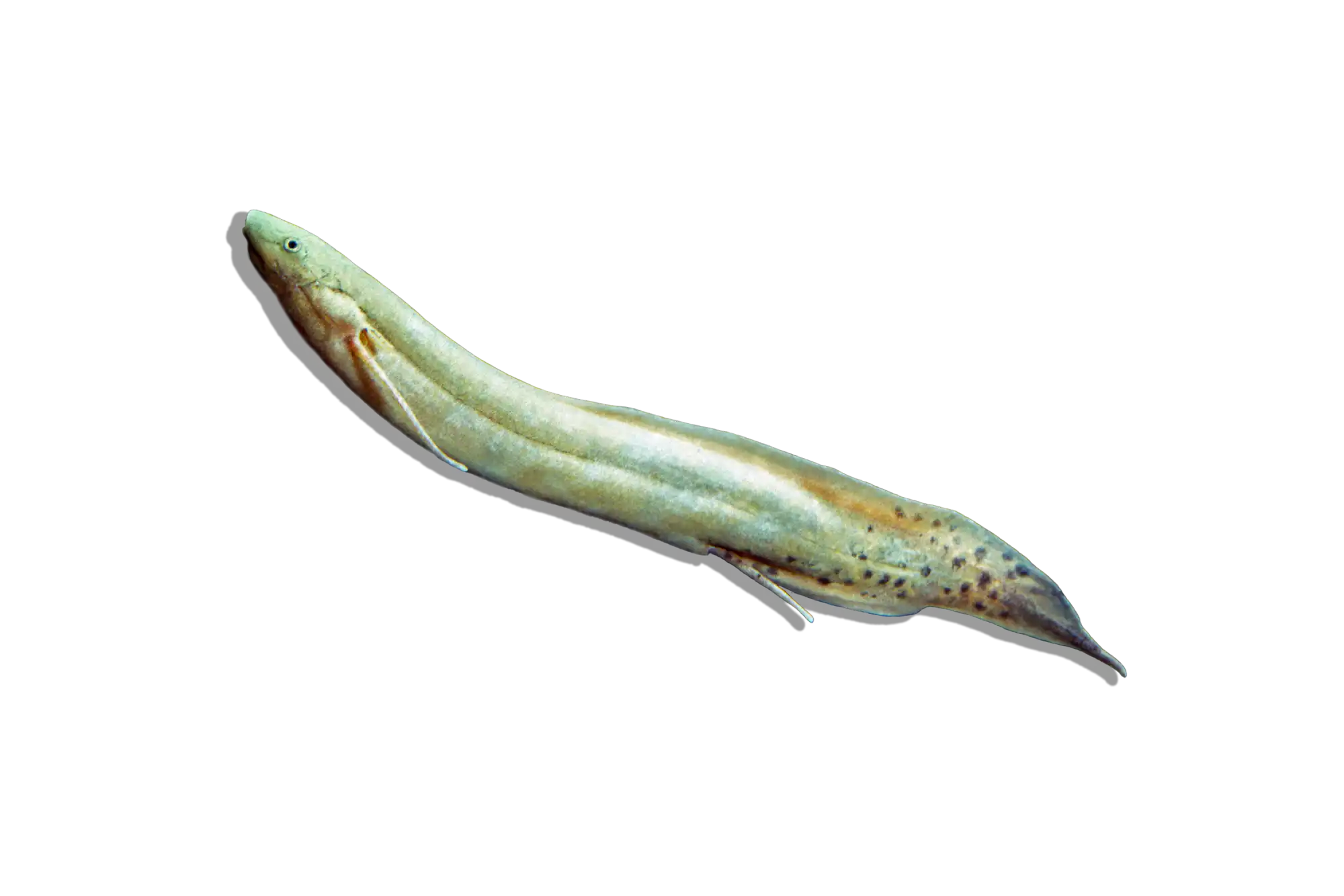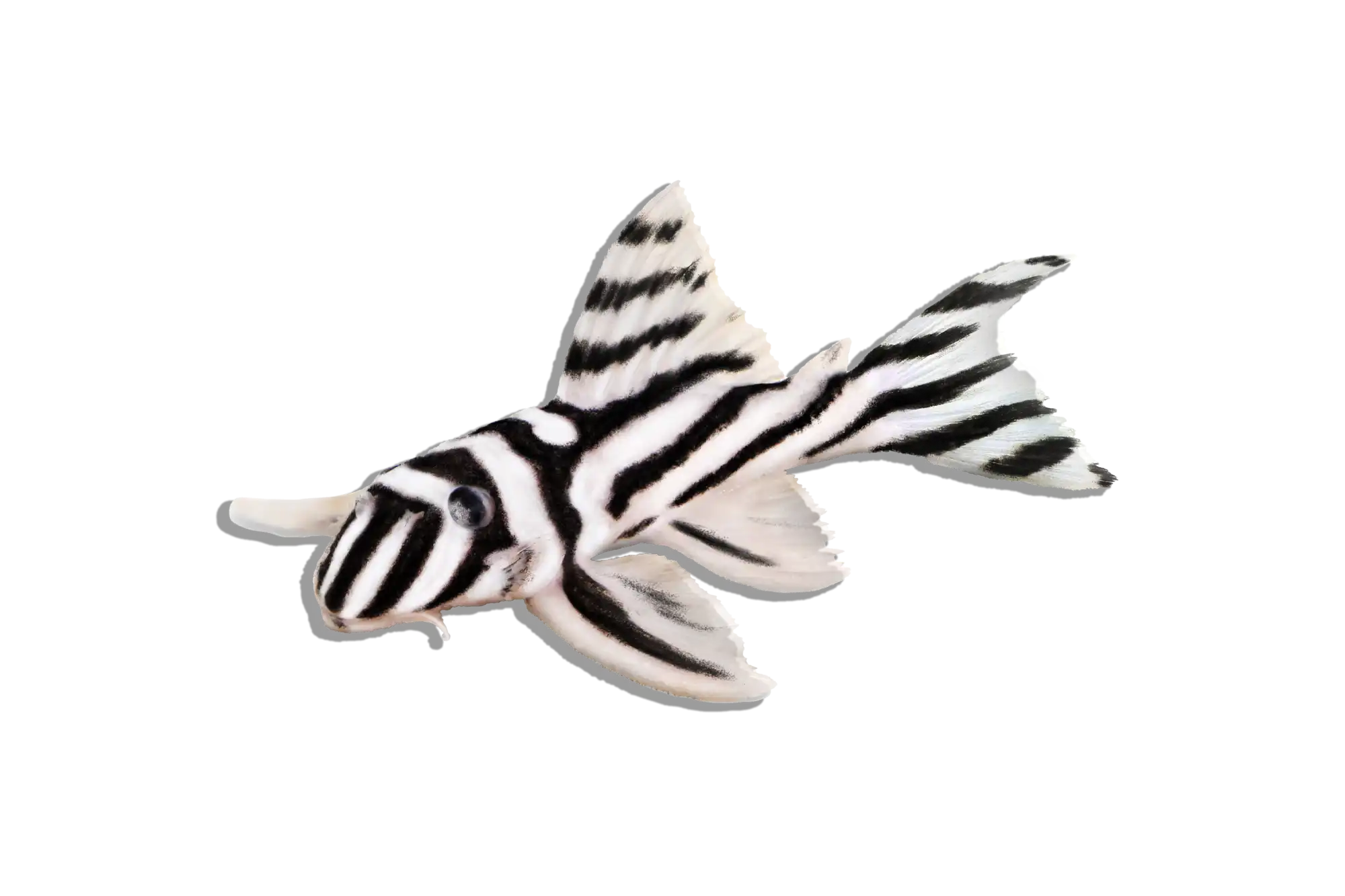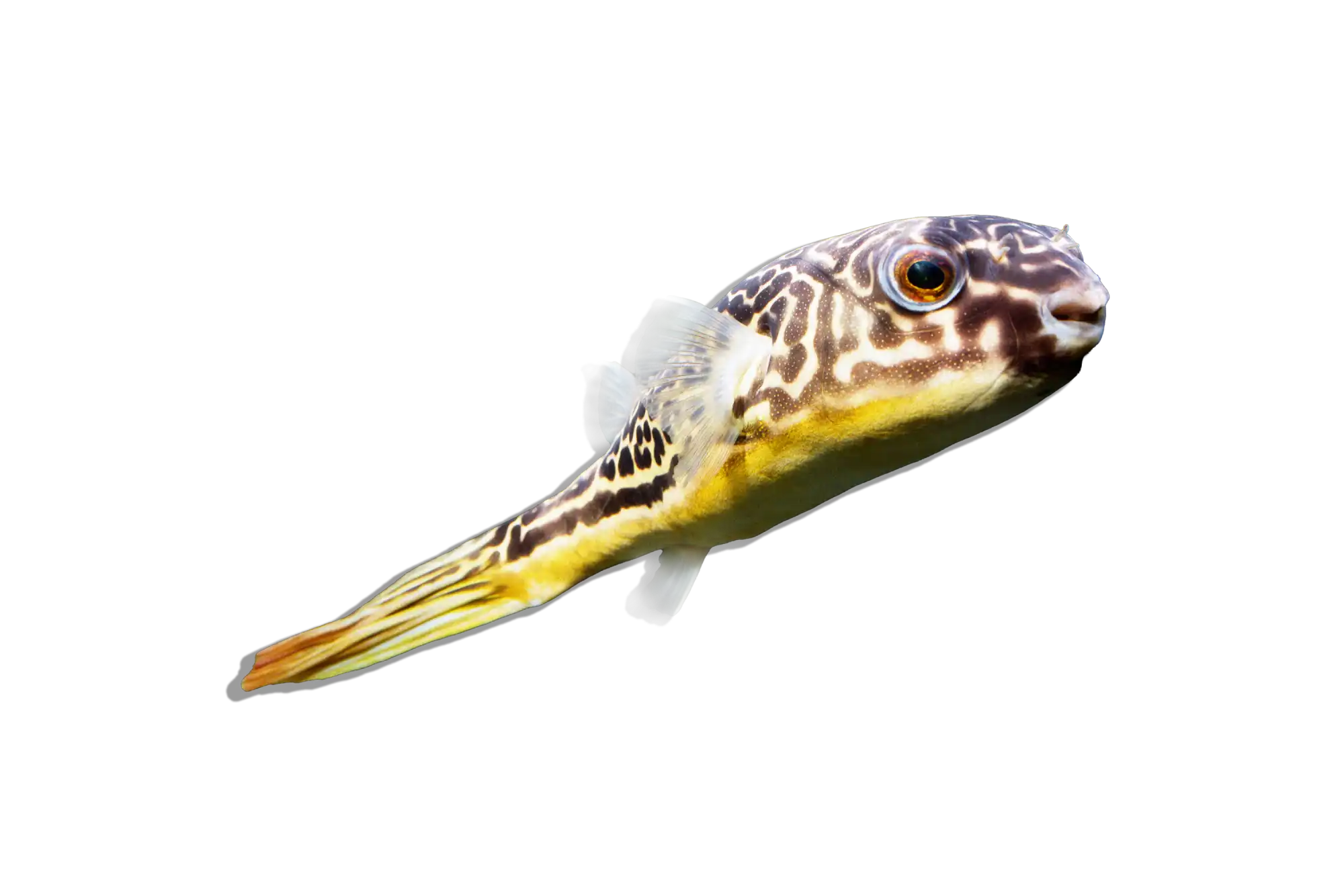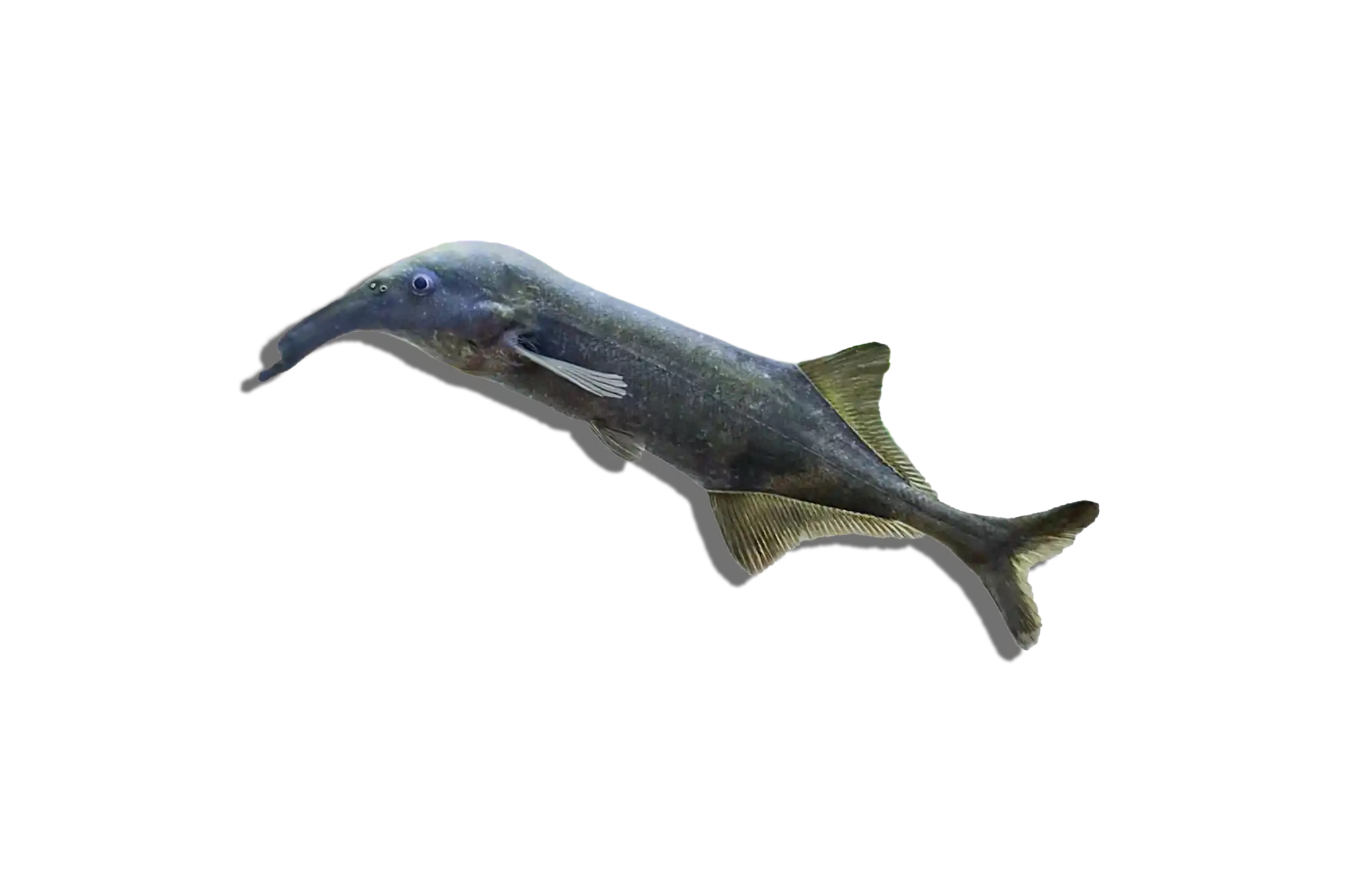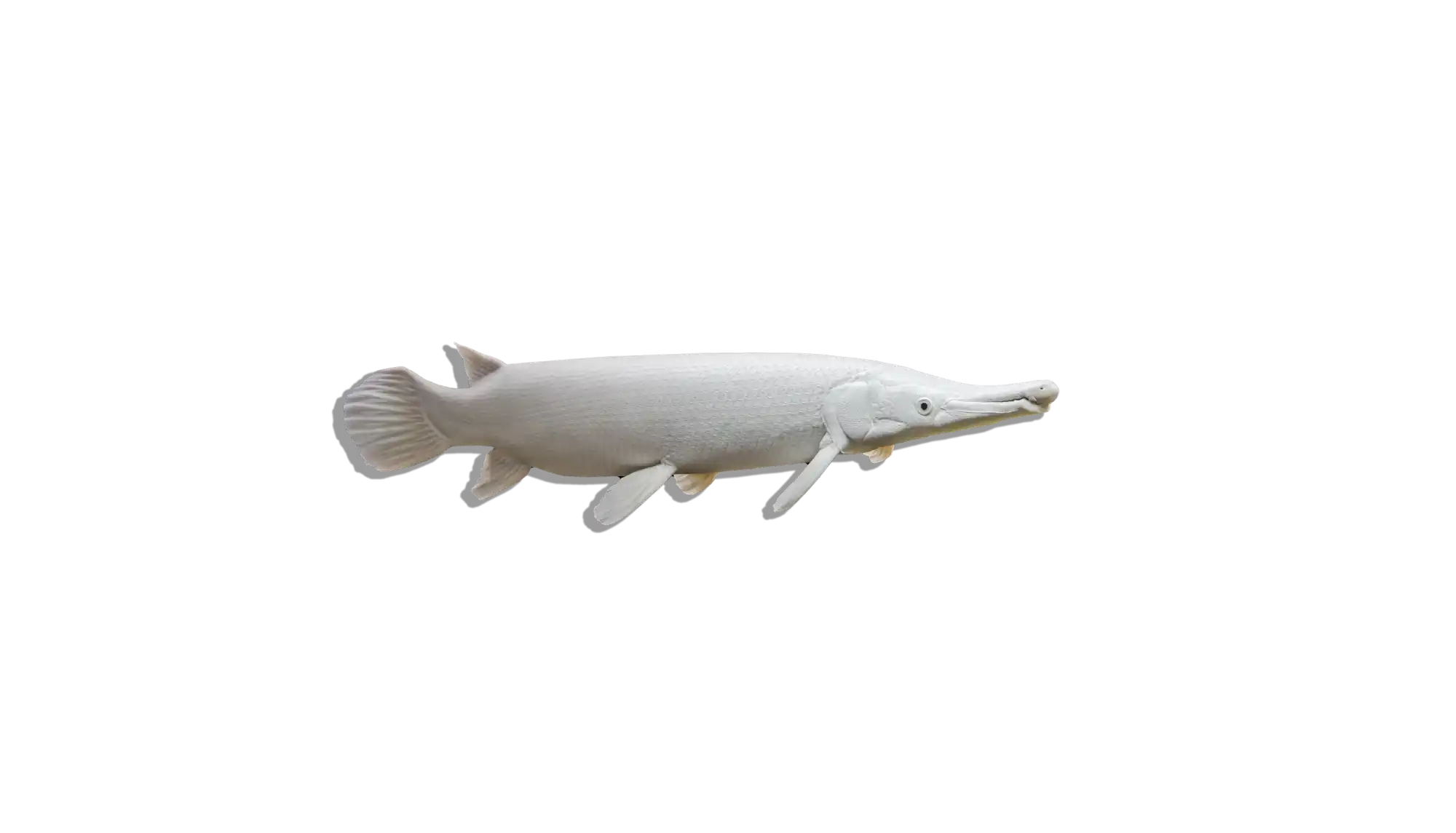Description
Common Name: Giant Emperor Cichlid
Scientific Name: Boulengerochromis microlepis
Other Names: Blue Emperor Cichlid, Emperor Cichlid
The Giant Emperor Cichlid is the largest known cichlid species, displaying an impressive combination of size, aggression, and vibrant coloration. Juveniles start with a bright yellow body adorned with dark vertical bars, which fade as they mature into a more subdued blue-green coloration. Males tend to develop more intense hues than females. This species is a dominant predator in its natural habitat and requires an exceptionally large tank with carefully chosen tank mates due to its territorial and aggressive nature.
Habitat and Distribution:
Native to Lake Tanganyika, the Giant Emperor Cichlid inhabits open water and rocky shoreline areas, often patrolling large territories. Juveniles prefer shallower waters for protection, while adults migrate to deeper waters, where they hunt smaller fish. Their environment consists of highly oxygenated, alkaline water with stable temperatures.
Size and Lifespan:
This species can reach up to 30 inches (75 cm) in the wild, though captive specimens typically grow between 18-24 inches (45-60 cm). With proper care, they can live for 10-15 years, making them a long-term commitment for aquarists.
Diet and Behavior:
Giant Emperor Cichlids are carnivorous predators, feeding primarily on smaller fish in the wild. In captivity, their diet should include high-quality carnivore pellets, frozen or live foods such as chopped raw tilapia, earthworms, and silversides, and occasional crustaceans like shrimp. Avoid feeding mammalian meats, as they are difficult to digest. These cichlids are highly territorial and aggressive, especially as they mature. They require ample space to establish their dominance and should only be housed with equally large and robust tank mates.
Breeding and Reproduction:
Emperor Cichlids are substrate spawners, with pairs forming strong bonds during the breeding process. To encourage breeding, provide large, flat rocks for egg-laying, maintain pristine water quality, and ensure a secure territory for the pair. After spawning, both parents actively guard the eggs and fry, exhibiting intense parental care. Eggs typically hatch within 3-5 days, and fry become free-swimming after another week. Fry should be fed finely chopped protein-rich foods such as baby brine shrimp.
Aquarium Care and Tank Requirements:
A minimum of 300 gallons is required for a single adult, with larger tanks (500+ gallons) preferred for multiple individuals. Their ideal tank setup includes a fine sand or smooth gravel substrate, large rock formations to create natural territories and hiding places, powerful filtration to maintain water clarity and oxygenation, moderate to strong water flow, and bright lighting to enhance their coloration.
Ideal Tank Mates:
Due to their size and aggression, suitable tank mates must be large, robust fish that can hold their own. Possible tank mates include Frontosa cichlids, Fossorochromis rostratus, large Plecos, large Tanganyikan Synodontis catfish, and other massive, non-fragile cichlids. Avoid small or delicate fish, as they will likely be eaten or bullied.
Difficulty Level:
Advanced. Their large size, aggressive nature, and tank space requirements make them a challenging species best suited for experienced aquarists.
Water Parameters:
- Temperature: 75-82°F (24-28°C)
- pH: 7.8-9.0
- General Hardness (GH): 10-20 dGH
- Carbonate Hardness (KH): 10-15 dKH
- Ammonia: 0 ppm
- Nitrite: 0 ppm
- Nitrate: <20 ppm (regular water changes required)
Additional Information:
- Giant Emperor Cichlids grow rapidly and require a substantial diet to support their development.
- They are highly intelligent and can recognize their owners, often displaying interactive behaviors.
- Due to their predatory nature, they should not be housed with fish small enough to fit in their mouths.
The Giant Emperor Cichlid is a true giant among cichlids, offering both stunning appearance and impressive personality. It is best suited for aquarists with the experience and space required to house this remarkable species.

